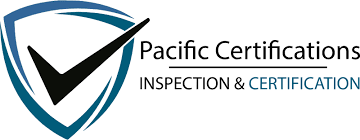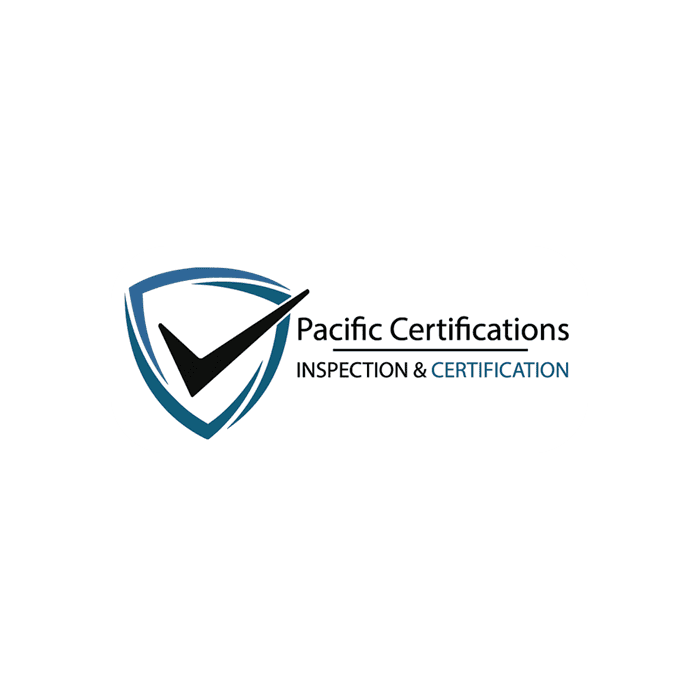ISO Certification Without Consultants: Is It Possible and Practical?
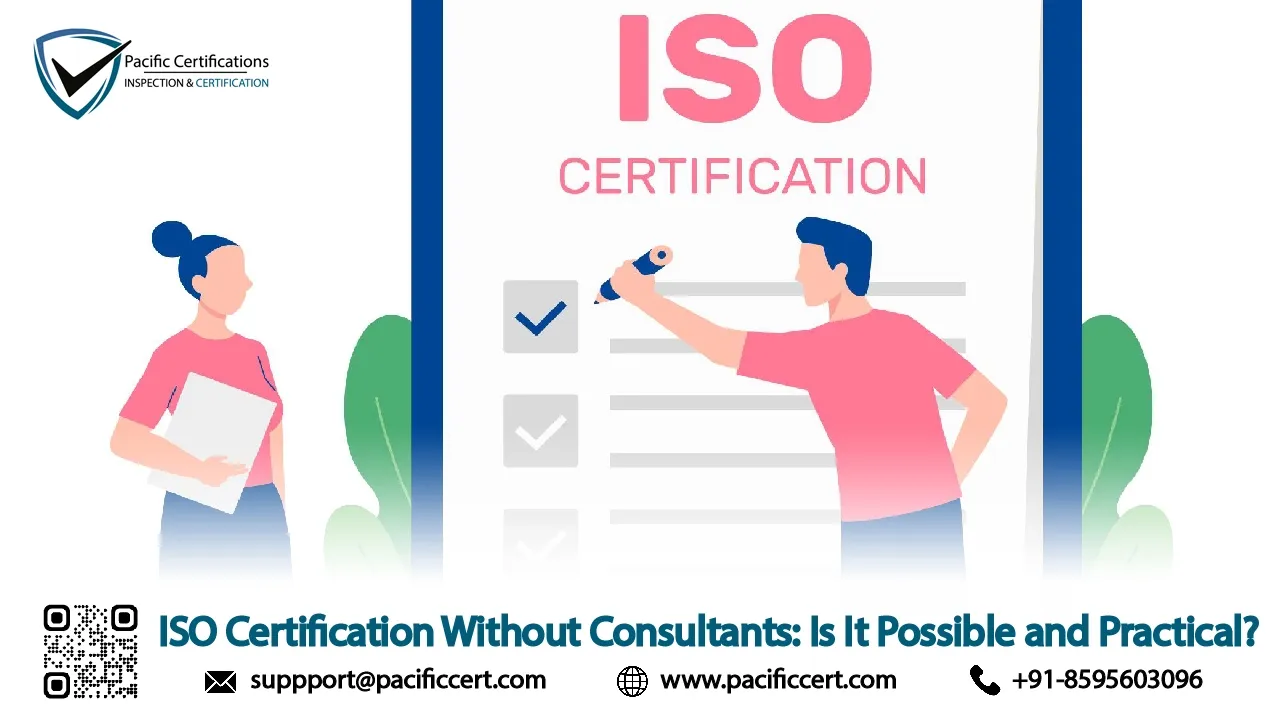
ISO certification is widely recognised as one of the most trusted indicators of quality, environmental stewardship, information security and occupational health and safety. Many have the false assumption that this requires hiring consultants to help navigate through complicated policies and procedures. In reality, ISO certification is fundamentally about assessing your organization’s management systems and processes against accepted international standards. With planning, effective document management and staff consistency and commitment, a business can achieve certification without consultants. This ensures a low-cost achievement, builds long-term internal capability to manage standards and creates ownership of policies and procedures.
To begin your ISO certification journey independently, Pacific Certifications provides audit and certification services to guide your organization through Stage 1 and Stage 2 audits. Reach out to our team at [email protected].
What ISO Certification Means for Your Business?
ISO certification demonstrates that a company’s processes comply with the requirements for certain standards such as: ISO 9001 for quality management, ISO 14001 for environmental management, ISO 27001 for information security and ISO 45001 for occupational health and safety. Attaining certification shows customers, partners, and regulators that the company engages in internationally accepted practices. Although you may engage a consultant to help with the process, using a consultant is not a requirement. The standards are available, you can find ISO standards on their website. Your in-house team, can utilize the standards to independently research the requirements, document the processes and implement the appropriate controls.
What are the Benefits of Implementing ISO Internally?
Before discussing the important topics, we should have a quick overview of the benefits of ISO certification without consultants, as this allows an organization to create a deep internal understanding of processes, and create ownership at ALL levels of a business. The benefits include:
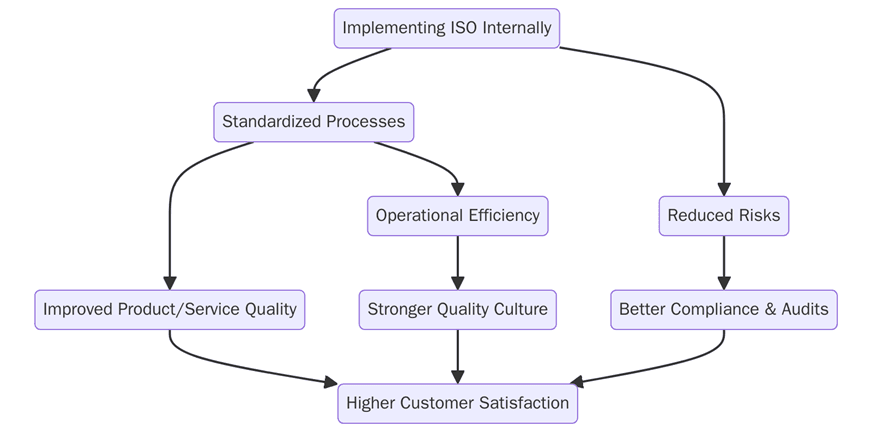
- No consultancy fees, reducing overall certification costs.
- Staff understand the standard and processes in detail.
- Employees take ownership of maintaining standards.
- Organizations can develop a timeline and change things as they please based on internal timelines not consultant timelines.
- The organization's familiarity with processes means better internal and external audits.
- Employees will be more likely to notice efficiencies and opportunities for quality improvements.
What are the Requirements to Achieve ISO Certification Independently?
Achieving certification without external consultants requires careful planning and structured execution. Key requirements include:
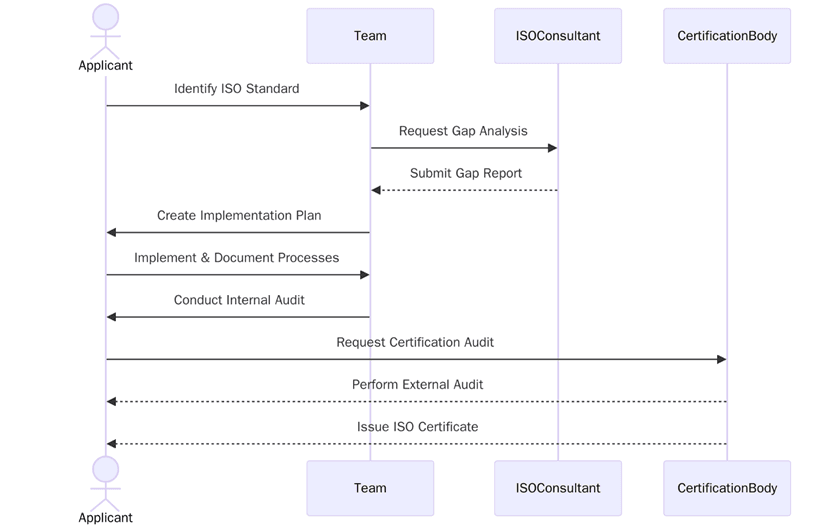
1. Study the applicable ISO standard thoroughly to determine the mandatory clauses and document requirements.
2. Evaluate your existing processes against the standard requirements and identify areas for improvement.
3. Senior management should provide resources and approve policies, and determine to support the project behaviours required of staff.
4. Develop the required policies, procedures, work instructions, and records, in accordance with the standard.
5. Train employees to understand the standard’s requirements and their role and responsibilities within the management system.
6. Conduct periodic audits to verify compliance and identify non-conformities.
7. Manage corrective action and improvement solutions from internal audits or management review meetings.
8. Assess the effectiveness of the system, and improve before external audits.
9. Have documentation, evidence and staff ready for an external assessment.
10. Coordinate with certification body to arrange the stage 1 and stage 2 audits in an effective manner.
For more information, reach out to our team at [email protected].
Points to Remember
Planning and Documentation for ISO Certification
Documentation is an essential building block of any ISO standard. Organizations can develop simple documents, following examples or guides, even without a consultant. Organization policies should be related to the objectives of the organization and the standard of interest. Procedures and work instructions need to be practical documents that convey the mode of practice of day-to-day operational features. Documentation records are important to keep up to date because they are generally reviewed during audits to verify conformance.
Training Employees for Self-Implementation
Training is very important if your organization is to achieve ISO certification without outside assistance. Every employee will only be as good as their training. As a manager or owner you can conduct groups and/or individual meetings, offer self-directed learning using electronic references, supplement their work with materials to promote their adoption of a Management System. They will be meaningful participants in your future processes, and more importantly they will be vigilant in identifying non-conformities early and lead the processes leading toward improvement and in the end, resulting in quality, reducing external findings during audits.
Internal Audits and Reviews
Becoming part of the audit process: internal audits and management reviews will tell your organization when you are compliant, non-conformities that require corrective action before the external auditors show up to issue you an ISO standard compliance or certification. You will have a clearer understanding of how your processes are aligned to the ISO standard, and your readiness for formal certification should be better, more objective, and hopeful.
Choosing the Right ISO Standard
Depending on your organizational culture and specific case, some ISO standards may be more suited to your use than others. ISO 9001 states requirements for quality management systems; ISO 14001 relates to environmental management; ISO 27001 would be pertinent to information security; and ISO 45001 ensures occupational health and safety. Understanding the overall scope and requirements of the standards is necessary when selecting the most appropriate to self-implement
Preparing for the Certification Audit
Prior to the audit, you will need to conduct a review of all documentation, complete final internal audits, and ensure that staff understands their roles and responsibilities. Audits are usually conducted with two phases: Stage 1 where your documentation will be assessed, and Stage 2 to assess the implementation and effectiveness of your management system.
Maintaining ISO Certification
Post-certification, surveillance audits are starting + periodic management reviews are necessary to remain compliant. Internal monitoring will allow you to determine whether the management system is aligned with your ISO standard and whether the implementation remains effective. Conducting ongoing internal audits prevents non-conformities from going unrevised and provides you in evidence that you have a mature, self-sustaining system.
Contact us
Pacific Certifications offers accredited ISO certification services and can guide your organization throughout the audit process, even if you choose not to use consultants.
Reach out to us at [email protected] or visit www.pacificcert.com.
Ready to get ISO 27001:2022 certified?
Contact Pacific Certifications to begin your certification journey today!
Suggested Certifications –
